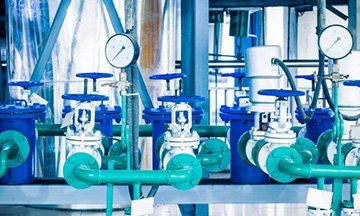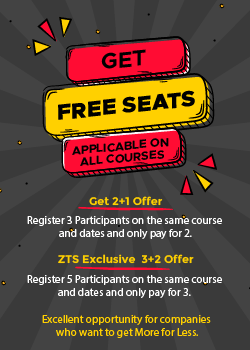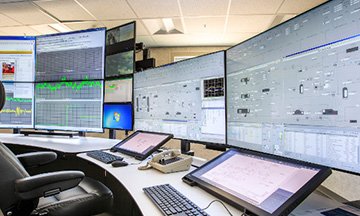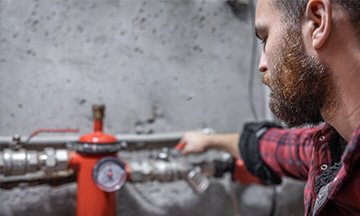Process Control Valve – Sizing, Selection and Maintenance Training Course
| Date | Format | Duration | Fees | |
|---|---|---|---|---|
| 22 Apr - 26 Apr, 2024 | Live Online | 5 Days | $2250 | Register |
| 30 Jun - 11 Jul, 2024 | Live Online | 10 Days | $4495 | Register |
| 19 Aug - 23 Aug, 2024 | Live Online | 5 Days | $2250 | Register |
| 23 Sep - 25 Sep, 2024 | Live Online | 3 Days | $1750 | Register |
| 06 Oct - 10 Oct, 2024 | Live Online | 5 Days | $2250 | Register |
| 22 Dec - 26 Dec, 2024 | Live Online | 5 Days | $2250 | Register |
| Date | Venue | Duration | Fees | |
|---|---|---|---|---|
| 22 Apr - 26 Apr, 2024 | Dubai | 5 Days | $4750 | Register |
| 06 May - 10 May, 2024 | Dubai | 5 Days | $4750 | Register |
| 16 Jun - 27 Jun, 2024 | Doha | 10 Days | $9150 | Register |
| 17 Jun - 21 Jun, 2024 | Dubai | 5 Days | $4750 | Register |
| 29 Jul - 02 Aug, 2024 | Dubai | 5 Days | $4750 | Register |
| 05 Aug - 09 Aug, 2024 | Dubai | 5 Days | $4750 | Register |
| 11 Sep - 13 Sep, 2024 | Athens | 3 Days | $4475 | Register |
| 30 Sep - 04 Oct, 2024 | Dubai | 5 Days | $4750 | Register |
| 14 Oct - 18 Oct, 2024 | Dubai | 5 Days | $4750 | Register |
| 27 Oct - 31 Oct, 2024 | Doha | 5 Days | $4950 | Register |
| 18 Nov - 22 Nov, 2024 | Dubai | 5 Days | $4750 | Register |
| 08 Dec - 12 Dec, 2024 | Amman | 5 Days | $4950 | Register |
| 09 Dec - 13 Dec, 2024 | Dubai | 5 Days | $4750 | Register |
Course Overview
Power Plant, petrochemical, and other oil and gas companies do deal with different types of valves. All piping systems are fitted with valves for controlling reasons or safety necessities. Understanding the purpose of each valve type will have a significant reflection on the process quality, equipment and plant reliability, and the economics of the whole action.
The different application requires to select the appropriate valve type of specific flow characteristics. The operation and Function of the valve also affect the system and the process. Understanding the difficulties and problems associated with valves is vital for diagnosis and troubleshooting and the necessary maintenance for the particular type of valves.
Valves can be categorised as manual or control valves. What type of valve is a control valve? When a manual valve is operated via an actuator, it becomes a control valve. Valves in common do control the rate of flow in a piping system, the direction of the flow, or perform as a relieving device to protect the system from over pressurization.
Valves like check valves would avert the flow from reversing, thus protecting equipment from reverse flow. Such valves function automatically without the need for any type of actuation. Stop and close valves are used predominantly to isolate a system in a situation of maintenance and/or putting the standby equipment in services. The function and purpose of a valve are what determines its design.
The right choice of a valve in terms of its type and size, and its pressure class is what affects most the stability and reliability of the system. The nature of the fluid, the type of the process, the level of temperature and pressures are parameters and considerations affecting the valve selection.
The flow through a valve will experience distinctive effects, like cavitation, flashing, and noise. Water hammer is one of the special effects that a check valve may cause. Such occurrence might lead to different kind of problems, some would affect directly the valve itself and other might distraught the process as a whole or result in system erosion or corrosion.
Vibration and instrumentation false function might also be an effect of a faulty valve. Some of these complications can be avoided in the stage of selection and sizing of the valve. Others could be removed in the process of writing the specifications and through good communications with the manufacturer or vendor.
Thoughtful considerations of these different types of problems will help in troubleshooting the valves and the systems and help to cure the problems. Wrong installations could be the cause behind many of the valves problem too. At the base of any process are the field devices that measure and control the flow of air, steam, water, gas or hundreds of other materials.
Without suitable basic setup, calibration and configuration of these devices, advanced control techniques cannot deliver the levels of efficiency the technology is capable of. Information of process control devices within a plant is regularly passed down from generation to generation.
At the same time, if advances in process technology and methodology typically brought about by training aren’t brought into the plant, in-house benchmarks for device setup and maintenance can become based on outdated theory. The outcome is that while a valve or instrument may be working, it may not be functioning up to its capabilities and is not delivering on its assured performance.
This Zoe training course analyses design and operating principles of control valves, actuators, positioners and related accessories. It explains the sizing and selection methods for a wide-ranging variety of control valve assemblies.
Course Objectives
Upon completing this Process Control Valve – Sizing, Selection and Maintenance course successfully, participants will be able to:
- Know the different type of Control Valves
- Acquaint the participant with the valve characteristics comprising the valve tightness class and the flow characteristics
- Enhance the knowledge of the application, operation and design of different types of valves
- Offer skills, knowledge and understanding of the principles and practices of the associated Codes and Standards related to Control Valves
- Discover the methods for valve selection, specifications and sizing that suit a specific application
- Study methods of valve testing, inspection and troubleshooting established on the industrial and manufacturer codes and standards
- Control Valve Defects, i.e., Travel deviations, Instrument Air defects, Friction, Flashing & Cavitation’s
- Control Valve Bench Set up
- Use Modern Control valve maintenance techniques. i.e., diagnostic, online monitoring, HART
Training Methodology
This collaborative Process Control Valve – Sizing, Selection and Maintenance training program will comprise the following training methods:
- Lectures
- Seminars and Presentations
- Group Discussions
- Assignments
- Case Studies and Functional Exercises
Zoe Talent Solutions follows the ‘Do-Review-Learn-Apply’ model.
Organisational Benefits
Companies who nominate their employees to participate in this Process Control Valve – Sizing, Selection and Maintenance course can benefit in the following ways:
- Keep your company one step ahead with this all-inclusive overview of Process Control Valve – Sizing, Selection and Maintenance
- Assist technical committees to create, publish and revise working standards relating to control valves
- Carefully learn from examples and case studies to illustrate the course material being discussed and make sure that it is suitable to the organisation represented
- Leave with an awareness and understanding of their roles and responsibilities in the workplace in relation to control valves
Personal Benefits
Individuals who participate in this Process Control Valve – Sizing, Selection and Maintenance course can gain from it in the following ways:
- Correctly perform installation procedures
- Perform basic troubleshooting
- Change valve trim, gaskets and packing
- Calibrate an array of pneumatic and electronic instruments
- Correctly perform installation procedures
- Select the proper valve characteristic for a specified process
- Select suitable styles of control valves for an application
- Size of control valves and actuators
- Properly apply positioners and instruments
- Choose and size control valves to decrease aerodynamic noise
- Choose and size control valves for cavitating applications
- Select valve types and possibilities for corrosive and erosive fluids
- Choose size of control valves for two-phase flow and hydrocarbon mixtures
Who Should Attend?
Process Control Valve – Sizing, Selection and Maintenance training course would be suitable for:
- Instrumentation and Control Engineers & Technicians
- Electrical Engineers & Technicians
- Project Engineers
- Mechanical Engineers & Technicians
- Process Control Engineers
- Consulting Engineers
- Maintenance Engineers & Technicians
- Production Controllers
- Project Managers
Course Outline
MODULE 1: INTRODUCTION
- Control Valve Terminology
- Control Valve
- Basic Control Loop
- Control Valve Gain
- Hysteresis
- Dead Band (Backlash)
- Hysteresis & Dead Band Effects
- Linearity
- Rangeability
- Turndown
- Accuracy
- Repeatability
- Loop Gain
- Resolution
- Dead Time
- Drift
- Capacity (Valve)
- Friction
- Stiction
- Principles of Valve Throttling Processes
MODULE 2: CONTROL VALVE STANDARDS
- Well Known Valve Standards
- Instrument Society of America (ISA)
- ANSI -American National Standards Institute
- API – American Petroleum Institute
- ASME-American Society of Mechanical Engineers
- NACE-National Association of Corrosion Engineers
MODULE 3: CONTROL VALVE COMPONENTS- CONTROL VALVE BODY
- Basic Valve Components- Body- Bonnet- Trim (Plug and Seat)- Packing- Actuator- End Connections
- Control Valve Classification
- Linear (Sliding Stem Valves)
- Globe Valves
- Single-Ported Globe
- Double-Ported Globe Valve
- Application-Throttling general purpose flow control valve
- 3-Way Valves
- Angle Valves
- Z Globe Valve
- Y Globe Valve
- Diaphragm Valve- Diaphragm Valve Assembly-Diaphragm Valve Positions (On-Off)-DIAPHRAGM VALVE POSITIONS (THROTTLING)-Application-Used for Biochemical Processes and For Regulation of Most Gases and Liquids
- Gate Valve-Rising and Non-Rising Stem-Gate Valve with Handwheel- Application-stop valves, (not throttling), high pressure and temp, not for slurries, viscous fluids
- Knife Gate valve
- Rotary Valves
- Ball Valve-Ball Valves Open / Close States-Application-Flow Control, Pressure Control, Shutoff, Corrosive Fluids, Liquids Gases, High Temperature
- Butterfly Valves-Butterfly Positions-Application-Low Pressure, Large Diameter Lines Where Leakage Is Unimportant
- DISC VALVE
MODULE 4: SPECIAL VALVES
- Pressure relief valves
- Pressure safety valves
- Needle Valves
- Check Valves-Swing Check valve-Lift Check Valves-Piston Check Valves-Ball Check Valves
MODULE 5: CONTROL VALVE BODY SELECTION
- Globe (Plug and Seat)
- Butterfly
- Diaphragm / Pinch
- Ball
MODULE 6: CONTROL VALVE PACKING
- What Is Packing?
- Packing in Sliding Stem Valve
- Stationary Loading
- Live-Loaded Valve Stem Packing
- Adjusting Packing Assemble
- Packing Material Selection
- Typical Packing Arrangement
- Typical Packing Friction Values
- Packing Material Specification
- SHUTOFF CLASSES
- VALVE SEAT LEAKAGE
- VALVE LEAKAGE CLASSIFICATIONS
MODULE 7: CONTROL VALVE ACTUATORS
- Actuators
- Pneumatic Actuators
- Diaphragm Actuators-Diaphragm Actuators Assembly
- Piston Actuators
- Double Acting Piston
- Rotating Actuators (Rack-And Pinion Mechanism)
- Hydraulic Actuators-Examples
- Electric Actuators (Mov)
- Hand Actuators
- Self-Actuated Valves
- Self-Operated, Spring-Loaded Gas Pressure Regulating Valve
- Pilot-Loaded or Externally Loaded Pressure Regulator
- Actuator Types Symbols
MODULE 8: VALVE FAILURE MODES
- What is the meaning of Failure?
- Direct/Reverse actions
- Direct Body
- Reverse Body
- Failure modes symbols
- How to choose failure mode for a control valve?
MODULE 9: ACTUATOR BENCH-SET/ACTUATOR RESPONSE
- Introduction
- Bench-Set Adjust-cases
- Actuator response problem
- 1st Using, I/P transducer
- 2nd Using Volume booster
- Volume booster VS Pressure regulator
MODULE 10: CONTROL VALVE POSITIONER/ Solenoid Valve
- Why do we need a positioner?
- Positioner is a control system?
- Advantages of adding positioner
- How can Positioner increase valve seating?
- Electronic positioners
- Examples for electronic positioner
- Examples for Pneumatic positioner
- 2-way solenoid valve
- 3-way solenoid valves
- 4-way solenoid valves
- Summary
MODULE 11: PROXIMITY SWITCH/SPLIT RANGE CONTROL
- Proximity (limit) switch
- Quick Exhaust valve
- Basic Control Strategies
- Split Range Control
- Complementary valve sequencing
- Exclusive valve sequencing
- Progressive valve sequencing
MODULE 12: CONTROL VALVE CHARACTERIZATION
- Inherent versus installed characteristics
- Installed characteristics
- Solving linearity problems
- Ideal Characteristic curves
- Examples
- Modified characteristic curves
- Practical Characteristic curves from manufacturers data
- Valve trim Assignments
- Cage guided
- Ball valve trim
- Summary
MODULE 13: SELECTION GUIDE (CHARACTERISTIC CURVE & BODY TYPE)
- Introduction
- Gate valve
- Globe Valve
- Ball valve
- Butterfly valve
- Selection Steps
- Summary
MODULE 14: CONTROL VALVE SIZING
- What is Valve Sizing?
- Flow Coefficient (CV)
- Valve as a Variable Restriction
- Pressure Drop
- Flow Capacity Coefficient CV
- Choked flow conditions (critical flow)
- Pressure Drop
- Liquid sizing equation
- Liquid Design Equations
- Relative flow capacity
- Typical values for relative flow coefficient
- Procedural steps to Accurately Size A Liquid Control Valve
- Control Valve Sizing Rules of Thumb
- What are the Control Valves sizing procedure?
- Valve Actuator Sizing
- Liquid Sizing Examples
- Design in steps in details
- Gas sizing equations
- Sizing for gases in steps
- Valve Sizing for Compressible Fluids
- Valve Sizing for Compressible Fluids Procedure
- Summary
MODULE 15: CONTROL VALVE ENGINEERING PROBLEMS
- Stiction
- How stiction affect valve movement?
- Flashing-What is flashing?
- Effect of valve body on flashing
- Cavitation
- Preventing flashing
- Use cavitation-control valve trim
- Special trim design
- Ball valve special trim
- Cushion with introduced gas
- Sustain the flashing action
- Chocked flow
- Flow vs ΔP
- Noise Prediction Aerodynamics
- Pressure drop staging
- Flow division
- Special valve trim
- Path control
- Erosion
- Bonnet damage
- Corrosion
- Valves, and how they suitably fit into pressure relief and Safety Instrumented Systems (SIS)
- Using digital controllers, with valves
- Summary
MODULE 16: 3-term Controllers and Loop-tuning for Processes containing Control Valves
- Understanding & implementing the right controller action, for fail-safe valves
- Thoughtfully considering all of the variables, associated with three-term control
- Open loop tuning, for controllers that act and work on control valve loops
- Closed loop tuning, for controllers that act and work on control valve loops
- Trial and error tuning, to improve control valve performance
MODULE 17: Using Valves in Cascade, Ratio, Dead-Time Dominant, Non-Linear & PLC-Controlled Processes
- Setting up a cascade loop, by means of a single valve and multiple controllers
- Setting up a ratio loop, by means of a single valve and multiple process variables (PVs)
- Dead time dominant loops, how this disturbs the valve performance, and how this is corrected
- Using a control valve in a method that exhibits different responses in different zones
- Combining PLCs, for valve control
MODULE 18: INSTALLATION AND MAINTENANCE
- Introduction
- Proper Storage and Protection
- Proper Installation Techniques
- Use Good Piping Practices
- Summary










